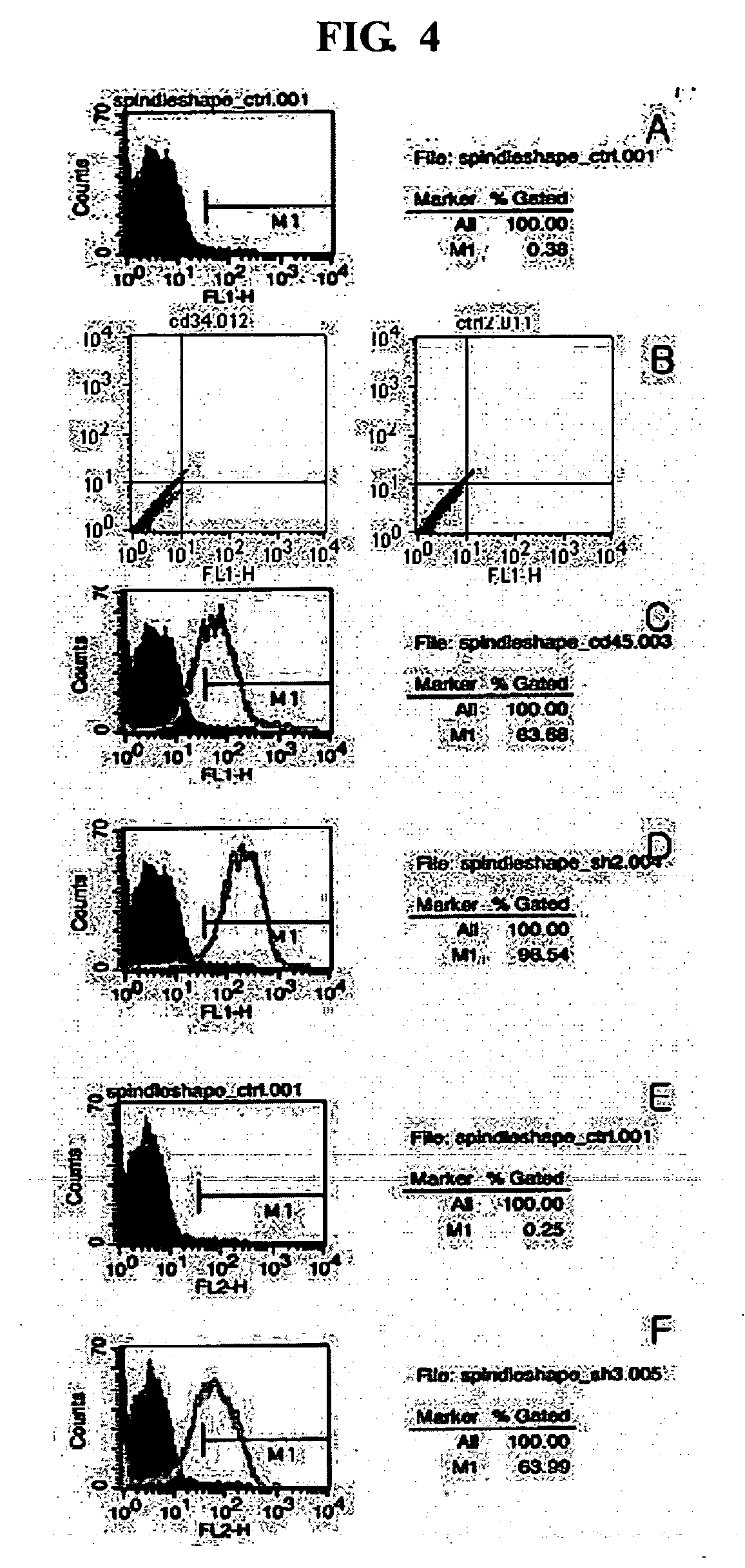Multipotent stem cells isolated from umbilical cord blood and the cellular therapeutic agent comprising the same for treating ischemic disease
a multi-potent stem cell, umbilical cord blood technology, applied in the direction of biocide, drug composition, cardiovascular disorder, etc., can solve the problems of local hypoxia and metabolic changes, cell division, and difficulty in defining cells as multi-potent stem cells
- Summary
- Abstract
- Description
- Claims
- Application Information
AI Technical Summary
Benefits of technology
Problems solved by technology
Method used
Image
Examples
example 1
Isolation of Multipotent Stem Cells from Umbilical Cord Blood
[0053] Umbilical cord blood was collected from full-term and preterm newborns in Seoul National University Hospital and Samsung Cheil Hospital according to Institutional Review Board guidelines.
[0054] 70-100 ml of a blood sample taken from the collected umbilical cord blood was diluted with PBS at a ratio of 1:1 followed by stirring. Then, the blood sample was separated on ficoll at a ratio of 15:25, in which the blood sample spilled smoothly onto 15 ml of picoll solution to cause layer separation, followed by centrifugation at 2500 rpm for 20 minutes. After the centrifugation, three different layers were formed, and among them, a buffer coat of the middle layer was taken with a micropipette, washed three times with HBSS, followed by centrifugation at 1500 rpm for 15 minutes, thus obtaining pellets (umbilical cord blood-derived multipotent stem cell solution).
example 2
Differentiation of Umbilical Cord Blood-Derived Multipotent Stem Cells into Osteogenic Cells
[0055] The umbilical cord blood-derived multipotent stem cell solution obtained in Example 1 was diluted in 1 ml of osteogenesis inducing medium (0.1 μmol / L dexamethasone (Sigma, USA), 0.05 mmol / L ascorbic acid-2-phosphate (Sigma, USA) and 10 mmol / L beta-glycophosphate (Sigma), 5-20% human serum or plasma) and counted for cell number. Then, the cell solution was cultured in a flask (5% CO2; 37° C.; medium replaced one time at 3-4-day intervals) to induce the differentiation of the multipotent stem cells into osteogenic cells. 14 days after the initiation of the culture, it was confirmed by Von-Kassa staining that the umbilical cord blood-derived multipotent stem cells differentiated into osteogenic cells (see FIG. 2).
example 3
Differentiation of Umbilical Cord Blood-Derived Multipotent Stem Cells into Nerve Cells
[0056] The umbilical cord blood-derived multipotent stem cell solution obtained in Example 1 were diluted in 1 ml of nerve forming medium (containing 10 ng / ml basic fibroblast growth (Roche, Switzerland), 10 ng / ml human epidermal growth factor (Roche, Switzerland) and 10 ng / ml human neural growth factor (Invitrogen, USA) in 5-20% human serum or plasma) and counted for cell number. The cell solution was cultured on a flask at 5% CO2 and 37° C. to induce differentiation from the multipotent stem cells into nerve cells. At 14 days after the initiation of the culture, it was confirmed that the multipotent stem cells showed positive responses to NSE (neuron-specific enolase), a neuron-specific antigen, and GFAP (glial fibrillary acidic protein), an astrocyte-specific antigen, indicating that the umbilical cord blood-derived multipotent stem cells differentiated into nerve cells (see FIG. 3).
PUM
| Property | Measurement | Unit |
|---|---|---|
| temperature | aaaaa | aaaaa |
| thickness | aaaaa | aaaaa |
| frequency | aaaaa | aaaaa |
Abstract
Description
Claims
Application Information
 Login to View More
Login to View More - R&D
- Intellectual Property
- Life Sciences
- Materials
- Tech Scout
- Unparalleled Data Quality
- Higher Quality Content
- 60% Fewer Hallucinations
Browse by: Latest US Patents, China's latest patents, Technical Efficacy Thesaurus, Application Domain, Technology Topic, Popular Technical Reports.
© 2025 PatSnap. All rights reserved.Legal|Privacy policy|Modern Slavery Act Transparency Statement|Sitemap|About US| Contact US: help@patsnap.com



